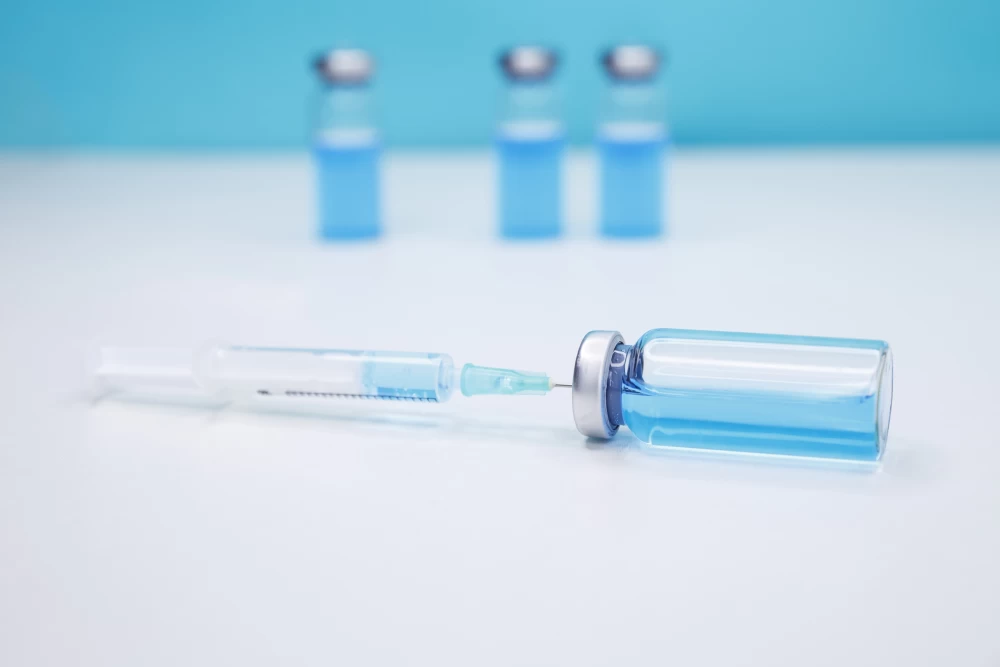
- 24th March 2023
Table of Contents
Causes of Fatty Liver Disease
Fatty liver disease is a condition in which there is an accumulation of fat in the liver cells. The most common cause of fatty liver disease is obesity, but it can also be caused by other factors such as alcohol consumption, diabetes, high blood pressure, and high cholesterol levels. However, recent studies have shown that insulin resistance may also be a significant contributor to the development of fatty liver disease. Insulin resistance occurs when the body does not respond properly to insulin produced by the pancreas. This condition causes glucose to remain in the bloodstream instead of being used for energy production. As a result, the body produces more insulin to compensate for this decreased sensitivity. This excess insulin promotes fat storage in the liver and leads to an increased risk of developing fatty liver disease. Studies have also shown that individuals with type 2 diabetes are at a higher risk of developing fatty liver disease due to their increased likelihood of having insulin resistance. Additionally, individuals who consume high amounts of fructose or sugar-sweetened beverages are at an increased risk for developing fatty liver disease due to fructose metabolism leading to hepatic fat accumulation. By addressing underlying metabolic issues such as improving glucose regulation and reducing sugar intake through lifestyle changes or medical interventions, it may be possible to prevent or manage cases of Fatty Liver Disease associated with Insulin Resistance.
Definition: What is Insulin Resistance?
Insulin resistance is a condition in which the body becomes less responsive to insulin. Insulin is a hormone produced by the pancreas that helps regulate blood sugar levels. When someone has insulin resistance, their cells are less able to respond to insulin, which leads to higher blood sugar levels. This can eventually lead to type 2 diabetes if left untreated. Fatty liver disease is another condition that is closely linked with insulin resistance. In fact, research suggests that up to 70% of people with fatty liver disease also have insulin resistance. Fatty liver disease occurs when there is an accumulation of fat in the liver, and it can be caused by a number of factors, including obesity and high alcohol consumption. While there isn't a clear consensus on exactly how fatty liver disease and insulin resistance are connected, it's thought that excess fat in the liver may interfere with normal cellular processes related to glucose metabolism and insulin sensitivity. Therefore, addressing both conditions through lifestyle changes such as diet and exercise can be crucial for overall health and prevention of complications like type 2 diabetes.
Signs & Symptoms of Fatty Liver Disease
Fatty liver disease is a condition characterized by the accumulation of fat in the liver. It can be caused by excessive alcohol consumption or non-alcoholic factors such as insulin resistance, obesity and high cholesterol levels. When it comes to insulin resistance, the liver becomes less responsive to insulin which leads to an overproduction of glucose in the body. This excess glucose is stored as fat in the liver. One of the most common signs and symptoms of fatty liver disease is abdominal discomfort, specifically on the upper right side where your liver is located. Other symptoms include fatigue, weakness and unexplained weight loss or gain. In some cases, people may experience jaundice which causes yellowing of their skin and eyes. If left untreated, fatty liver disease can lead to severe complications such as cirrhosis or even cancer. People who are at risk should consider making lifestyle changes that include eating a healthy diet low in sugar and saturated fats along with regular exercise.
Role of Diet in Fatty Liver Disease
Fatty liver disease is a health condition that occurs when there is an accumulation of fat in the liver cells. Insulin resistance is one of the leading causes of fatty liver disease, as it impairs the body's ability to break down glucose and store it as glycogen. This leads to an increase in blood sugar levels, which prompts the liver to convert excess sugar into fat. Diet plays a crucial role in both preventing and managing fatty liver disease. A diet high in refined carbohydrates such as sugary drinks, white bread, and pastries can worsen insulin resistance and promote fat buildup in the liver. On the other hand, a balanced diet rich in whole foods like fruits, vegetables, whole grains, lean proteins, and healthy fats can help improve insulin sensitivity and reduce fat accumulation in the liver. Moreover, certain dietary changes can also aid weight loss which has been proven effective for improving non-alcoholic fatty liver disease (NAFLD). A gradual reduction in calorie intake by 500-1000 calories per day has shown promising results for reducing hepatic steatosis (fat buildup) with improvements beginning after about six months on this type of calorie-restricted diet.

Link Between Fatty Liver and Insulin Resistance
Fatty liver disease is a condition characterized by the accumulation of fat in liver cells. This buildup of fat can lead to inflammation and scarring, which can cause damage to the liver. Research has shown that there is a strong link between fatty liver disease and insulin resistance. Insulin resistance occurs when the body's cells become less responsive to insulin, a hormone that regulates blood sugar levels. Insulin resistance can lead to an increase in glucose production by the liver, as well as an increase in fat storage. This excess fat storage can contribute to the development of fatty liver disease. In turn, individuals with fatty liver disease are at greater risk for developing insulin resistance and type 2 diabetes. It is important for individuals with either condition to manage their diet and lifestyle factors such as weight loss through exercise or dietary modifications like reducing consumption of processed foods or alcohol intake. Additionally, medical treatment may be necessary if complications occur or if significant changes aren't seen after lifestyle changes have been made.
Treatment Options for Both Conditions
Fatty liver disease and insulin resistance are closely related, as insulin resistance can lead to the accumulation of fat in the liver. Fortunately, there are several treatment options that can address both conditions. Firstly, lifestyle changes such as a healthy diet and regular exercise can help improve insulin sensitivity and reduce fatty liver disease. Following a low-carbohydrate diet may be particularly effective in reducing both conditions. Additionally, losing excess weight has been shown to improve fatty liver disease and insulin resistance. In some cases, medication may be necessary for treatment. For example, metformin is a commonly prescribed drug for those with type 2 diabetes or prediabetes and can also help with fatty liver disease. Other medications such as thiazolidinediones (TZDs) may also be used to improve insulin sensitivity and reverse fatty liver disease. Overall, it's important to work closely with a healthcare provider to determine the best course of treatment for both conditions based on individual needs and medical history.
Conclusion
In conclusion, it is clear that there is a strong connection between insulin resistance and fatty liver disease. Research has shown that individuals with insulin resistance are more likely to develop fatty liver disease, which can lead to serious health complications such as cirrhosis and liver cancer. It is important for individuals who are at risk of developing these conditions, such as those with obesity or type 2 diabetes, to make lifestyle changes such as increasing physical activity and following a healthy diet. Additionally, medical professionals should be vigilant in screening patients who may be at risk for fatty liver disease and provide necessary interventions to prevent its progression. Treatment options include medications and lifestyle modifications that can help improve insulin sensitivity and reduce the amount of fat in the liver. With proper management, individuals can significantly reduce their risk of developing complications associated with fatty liver disease and improve their overall health outcomes. Overall, understanding the connection between insulin resistance and fatty liver disease is essential in preventing its onset and managing its effects on overall health. By making simple lifestyle changes and seeking appropriate medical care, individuals can greatly reduce their risk of developing this common condition.
